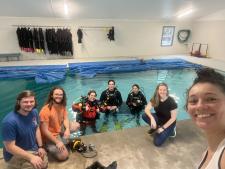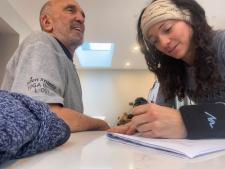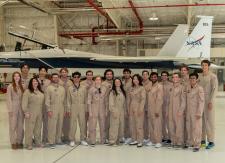Giovanna Camacho is a Ph.D. student at the University of Virginia School of Engineering and Applied Science. She’s also an expert diver, a skill she first learned at West Point.
Now she’s combining those roles to develop a wearable, low-cost device that could make water search-and-rescue operations more efficient.

Camacho works in associate professor of systems and information engineering Matthew Bolton’s lab, focusing on human factors engineering — designing technology that accounts for human capabilities and fallibilities.
Divers use sonar or eyewitness accounts to generally locate targets, but they still search by grid patterns and communicate with rope pulls, Camacho said. A “tender” on the surface sends directions — for example, three tugs to go right, four to go left — to the diver, whose location is marked by surface bubbles.
“In low visibility conditions, it’s already easy to miss something,” said Camacho, a volunteer with the Lake Monticello Water Rescue and Dive Team. “And the problem can be worsened when divers get confused by the directions they are being given and lose their orientation in urgent situations or in currents.”
With only minutes to find someone under water, the efficiency of search and rescue can determine the difference between life and death.

A Guiding Hand
Inspired by the Tactile Situation Awareness System developed for pilots by Angus Rupert, a mentor of hers at Embry-Riddle Aeronautical University, Camacho is developing a device that will be much more intuitive for the diver, with no rope codes to remember.
“It should feel like a hand guiding you,” Camacho said. “Thankfully, the technology’s advanced enough that we can design the exact frequency variations and vibrations you need to make it feel that way.”
By technology, she meant vibrating “tactors” activated by electrical wiring, all embedded in a garment worn around the diver’s waist inside a wetsuit or dry suit. For instance, an electrical tap on one side orients the wearer to a target. Multiple simultaneous vibrations guide the diver in the correct direction or to stop. A series of pulses conveys distance to the target.
Using GPS from the surface, the tender can deliver signals to direct the diver through the search grid, or coordinates could be preloaded into the system.
Do Camacho’s cues work?
“Yes,” said Larry Antonacci, a master diver and chief of the Lake Monticello team, who tested Camacho’s first prototype, though he didn’t think they were quite ready for inexperienced divers.
“In my line of work, where we do a lot in zero-visibility search and rescue, it would be a great low-cost alternative to rope pulls,” Antonacci said, noting that the voice systems his team normally uses cost several thousand dollars.
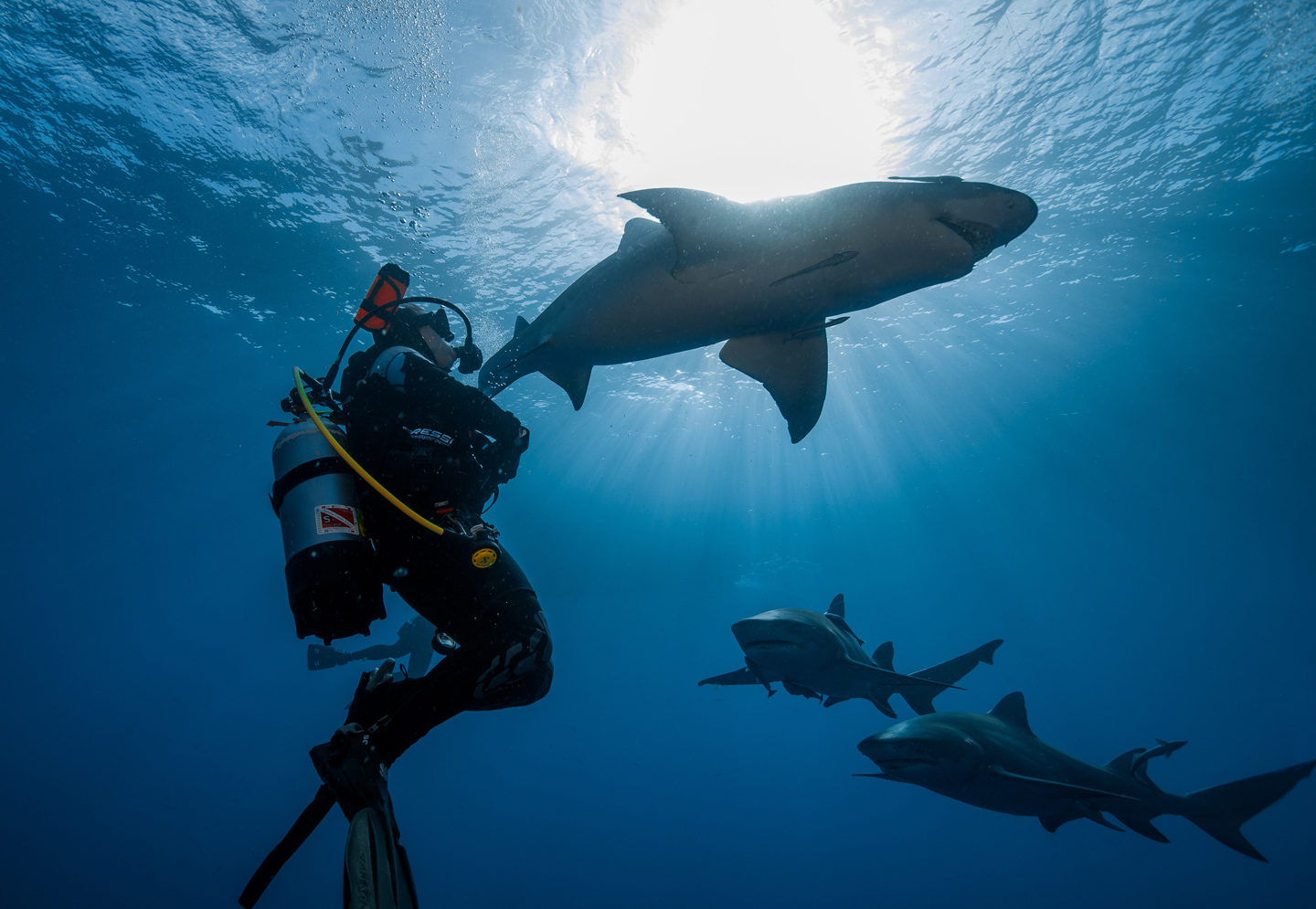
Beyond Diving
Diving isn’t the only use Camacho envisions for the device. She thinks it could silently guide soldiers through dangerous environments or give visually impaired people another navigational aid.
The last idea dawned on her when she conducted proof-of-concept experiments with visually impaired volunteers across Ireland. That opportunity arose through a U.S.-Ireland exchange program with UVA’s Link Lab.
Lastly, some of her funding is from the Virginia Space Consortium, which is interested in her underwater experiments as a viable way to see if these systems would work in space.
Design, Test, Iterate
Camacho’s first prototype — a Triton Systems T-shirt that she modified — was a crash course in soldering multipin connectors, building Arduino controllers and writing software. Fortunately, assistant professor of electrical and computer engineering Amanda Watson offered space in her wearable technology lab and assistance from her student, Sharon Lu, as well as advice on software development.
Her second prototype — which Camacho is working on while in California completing a NASA Pathways internship — will include a GPS integrated within a software app for your phone, customizable tactor positioning on your body, better waterproofing and a new wiring scheme to fix problems with the first version.
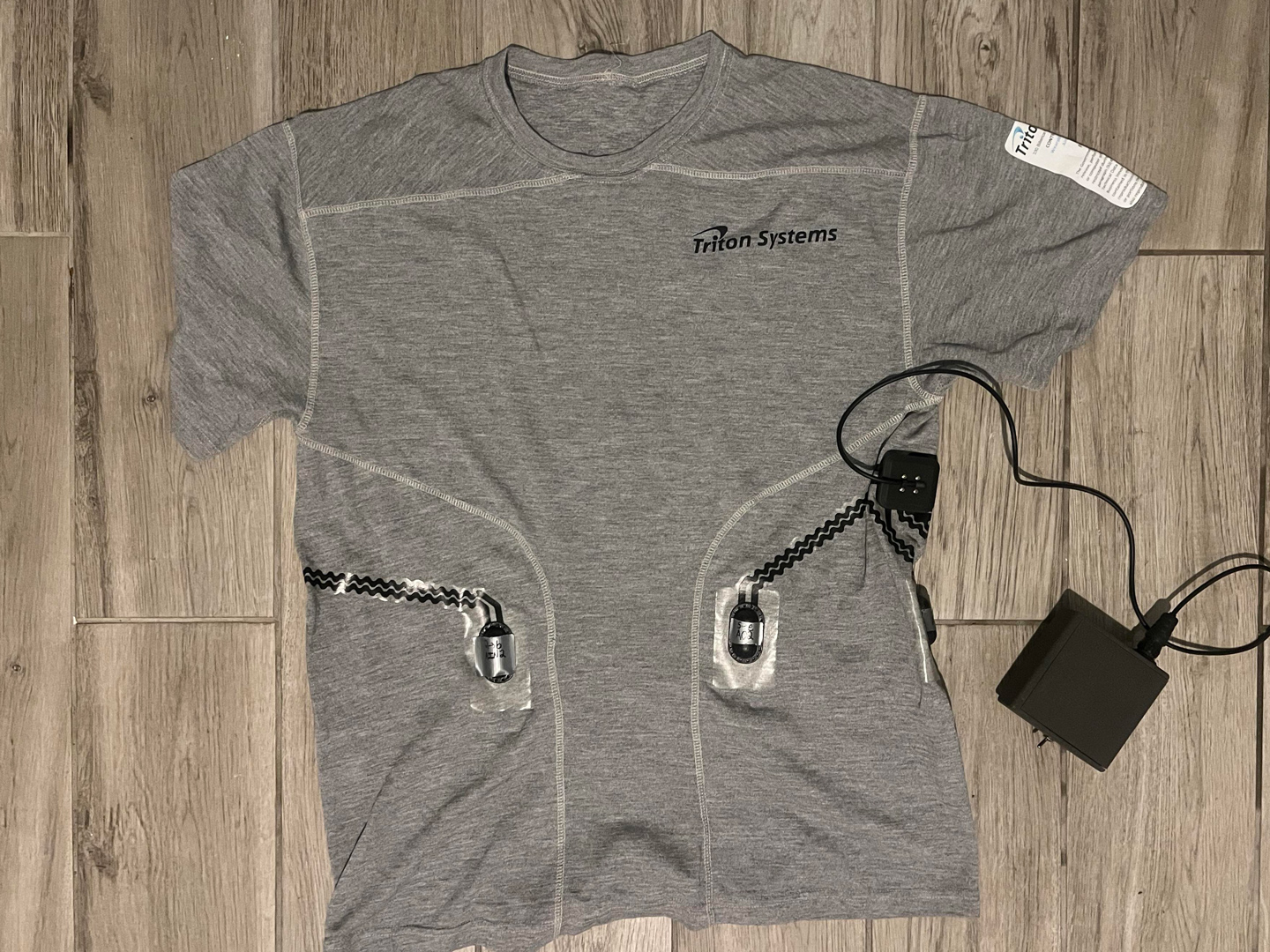
Eventually, Camacho plans to add artificial intelligence, so the system can predict and direct the user’s movements.
All of this has impressed Bolton, her Ph.D. adviser.
“Giovanna came here not knowing how to code,” he said. “Yet she has since mastered every aspect of this project.”
That includes finding funding for the project from the Women Divers Hall of Fame and UVA’s Raven Society in addition to the Virginia Space Consortium.
Camacho, a former Army captain and competitive boxer, has never lacked persistence and those experiences drive her ambitions. She is determined to work at NASA in a career that serves society and honors her past.
“A lot of things created for NASA ended up trickling down to industry and the military,” she said. “It allows me an opportunity to give back to war fighters, where I came from, and also help move towards the innovative future of what could be.”
